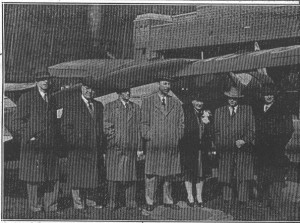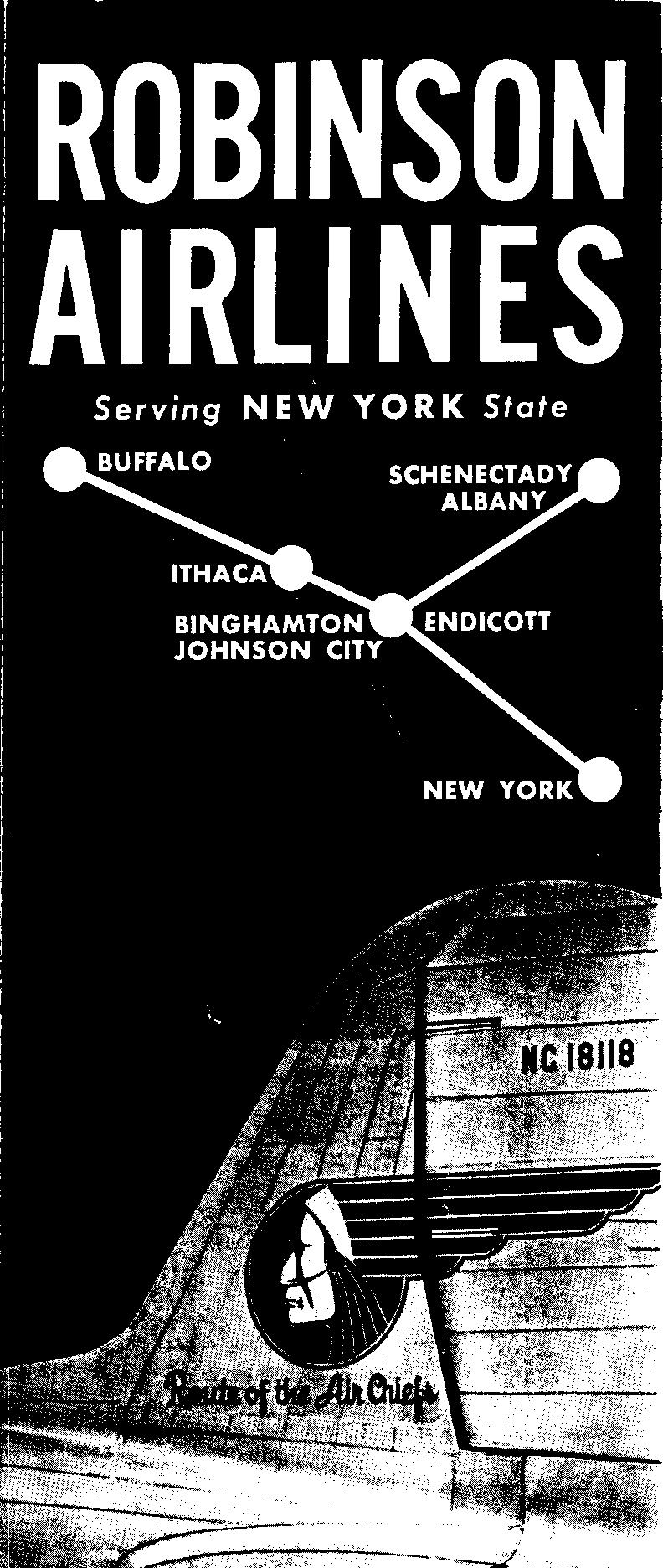Here is Part Two of our Multi-Part Series on the History of Aviation in Ithaca, NY. Part I can be found here. We’ll see how it is received. It is exciting for us to use material we gathered years ago, when we used to spend a lot of time in Ithaca. Some of the material we had scanned already, and some is sitting in boxes, waiting to be found.

The Civil Aeronautics Board was created in 1938 to promote and regulate the civil air industry within the United States and between the United States and foreign countries in the interests of foreign and domestic commerce of the United States, the Post Office, and the national defense. The Country had developed well-defined trunk airlines, providing service between large cities. But there was a need for an additional level of air service, as the trunk carriers were showing reluctance to serve the smaller cities on their routes. The Civil Aeronautics Board agreed to issue certificates to permit “feeder†operations.
In the spring of 1945, C.S. Robinson, owner of Robinson Aerial Surveys, had been flying his private planes between his home in Ithaca and his business in New Jersey. After fellow Ithacans began hitching rides to and from New York, he decided there was a need for commercial service. He applied for a temporary certificate and began service(Article that follows picture left).
Punctuating the small nature of the operation, the staff at the new Robinson Airline’s advertised New York City terminal, Teterboro, New Jersey consisted of one man, Otto Spangenberg. He not only made reservations and sold tickets, but he drove the limousine, loaded the passengers and baggage and dispatched the aircraft. If the weather was questionable, he’d race from Teterboro to another area airport. In fact, Robinson served six New York City area airports…Teterboro, Flushing, Caldwell-Wright, Roosevelt, Westchester, and Newark…depending on the weather, fuel, and where the pilot thought Otto would be. Back in Ithaca, the one-man sales department would often be at the Lehigh Valley Railroad Station, now a railroad-themed restaurant, selling tickets and advertising the advantages of flying, stealing a few away from the next train.
 During the first partial year of operation, Robinson Aviation carried nine hundred passengers with two daily round-trips to NYC with three-passenger planes. In 1946, it jumped to 12,000, and to 21,000 in 1947. The CAB granted them further certificates to provide service between Buffalo and New York, by way of Rochester, Ithaca, Elmira-Corning, and Binghamton, with spurs from Ithaca to Syracuse and Binghamton to Albany. Airline travel in this period was designed very similar to the train and bus travel of today. The planes would make numerous stops along a route, connecting to other spur routes. The strategy has since changed to that of nonstop flights, spreading out from a hub airport. Although multi-stop routes still remain, they are not quite as common.
During the first partial year of operation, Robinson Aviation carried nine hundred passengers with two daily round-trips to NYC with three-passenger planes. In 1946, it jumped to 12,000, and to 21,000 in 1947. The CAB granted them further certificates to provide service between Buffalo and New York, by way of Rochester, Ithaca, Elmira-Corning, and Binghamton, with spurs from Ithaca to Syracuse and Binghamton to Albany. Airline travel in this period was designed very similar to the train and bus travel of today. The planes would make numerous stops along a route, connecting to other spur routes. The strategy has since changed to that of nonstop flights, spreading out from a hub airport. Although multi-stop routes still remain, they are not quite as common.
It was found, by these experiment in feeder routes, that a short-haul carrier was better equipped than a trunk carrier to provide short-haul needs. Thus is true today, where most short-haul service is provided by small regional airlines that become authorized carriers for larger ones, allowing for a more efficient distribution of resources. The problem today is that it is becoming less cost-effective to make trips exclusively on short-haul carriers. It only becomes cost-effective if one is continuing on to some farther destination on a trunk airline. In some cases, the flight out of the smaller airport to the hub might cost more than when paired with another flight going a longer distance.
To Be Continued…. Comment or Twitter if you find this of interest.
![Reblog this post [with Zemanta]](http://img.zemanta.com/reblog_e.png?x-id=22adae16-b365-4ed8-bf81-9de4630ff46f)